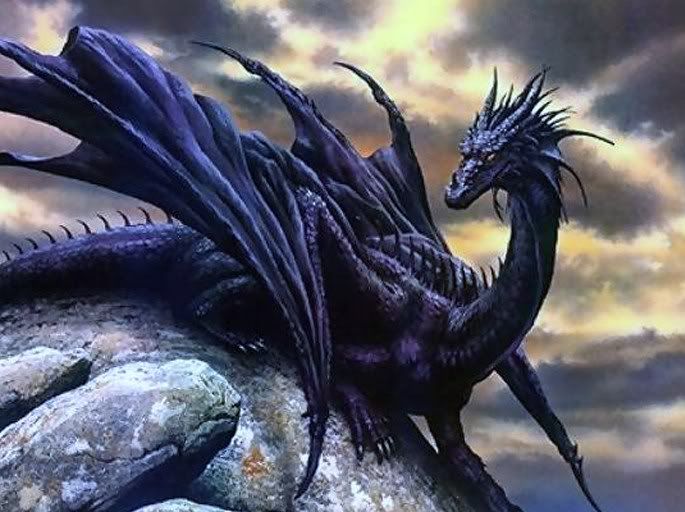
I’ve long had a love affair with the largest and most feared among magical creatures, the noble Dragon, and I’m not alone. Dragon motifs have their place among such genres as books, cinema, toys, clothing, jewelry, figurines, Tarot and Oracle decks, and fantasy art. Ah, and the Dragon artwork is magnificent! And due to their immense popularity, an in-depth look at Dragons and the mythos of these fantastical beasts is a worthy endeavor.
Although Dragons enjoy many historical references, mostly in the kidnapping of fair maidens, tormenting of townships, absconding with livestock, and creation of heroes who subdued them, they are currently considered, by most, as mythical.
However, if strange gigantic beasts such as the Tyrannosaurus, the Brontosaurus, and the Pterodactyl once existed on Earth, it’s not a stretch to believe that Dragons could have, as well. I fully expect there will one day be a discovery by some persistent archeologist of an intact fossilized Dragon skeleton.
For creatures considered to have been the subject of myths and legends, there exists a surprising treasure trove of lore regarding Dragon types, and their idiosyncrasies in feeding, mating, nesting, and family life.
Dragon Author Shawn MacKenzie
Modern-day author, Shawn MacKenzie has written several books on Dragons. And her books are quite entertaining as she refers to Dragons as if they not only existed, but as if they indeed still exist. Her concise primer on Dragons is available at this link, Llewellyn’s Little Book of Dragons (Llewellyn Publications, 2020).
MacKenzie also authored a Dragon themed tarot deck available at this affiliate link, Tarot of Dragons (Llewellyn Publications, 2022). It’s my personal favorite of all Dragon themed decks on the market. See our review of the deck on our sister blog, Mystic Arts Tarot at this link, Tarot of Dragons – Wisdom from the Dragon Realms.
Dragon Jargon
According to MacKenzie, Dragons belong to Cryptozoology, a pseudo scientific order of beasts, along with Unicorns, the Loch Ness Monster, and of course the Yetis.
Moreover, among the field of Dragon professionals, are Cryptoherpetologists who study Dragons, Cryptoveterinarians who care for them, and Cryptopaleontologists who search for Dragon fossil remains.
Additionally, those who love Dragons are Dracophiles, and those who strongly dislike them are Dracophobes. And, not to be forgotten, are the Dragon Keepers who adopt and raise young stray Dragons ensuring their survival.
Furthermore, a brooding female Dragon is a Queen, her male partner is a Sire, and her offspring are Hatchlings. An extended family of Dragons residing together is an Enchantment, and a community of several Dragon Enchantments is a Weyr.
Dragon Colors
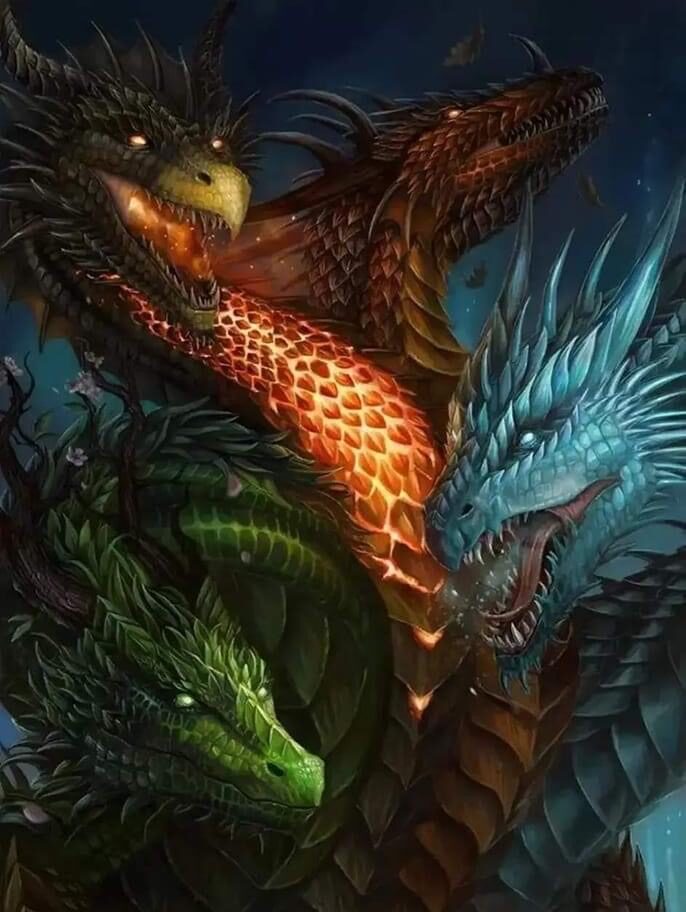
Dragons are known to sport quite muscular and magnificently colored bodies. The most often observed Dragon colors are the primary colors of red, orange, yellow, green, and blue. And on occasion, a black, white, gold, or silver Dragon has also been observed,
Furthermore, some texts give the Dragon colors specific correspondences. But because these color correspondences differ widely across continents they are more of literary than any true value.
Dragon Family Life
Many Dragon species mate for life which, sans meeting up with human weaponry, can be several hundred to 1,000 years. And they reproduce by the Queen laying magnificently large, scaled eggs. Reproductive aged Queens lay their eggs in the Spring in elaborate constructed nests within the safety of deep caves.
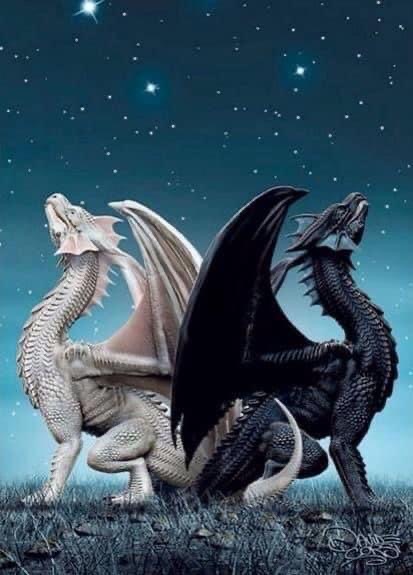
Then Dragon eggs take about 18 months of nest incubation to hatch. During which time, the Sire will take charge of gathering food and sustenance for his brooding Queen.
Once the Hatchlings are out of the shell, the Sire takes over feeding them so his Queen can take a well-deserved break. And both parents contribute to their Hatchlings’ extended education in the intricacies of hunting and fishing.
Notably, other Weyr members lend a “claw” to new parents whenever needed throughout the nesting and Hatchling rearing periods. They may offer aid such as food gathering or nest tending.
3 Main Large-in-Charge Dragon Species
Although there are many sub-types, large Dragons are divided into three main species, each with specific characteristics:
Eastern/Asian Dragons
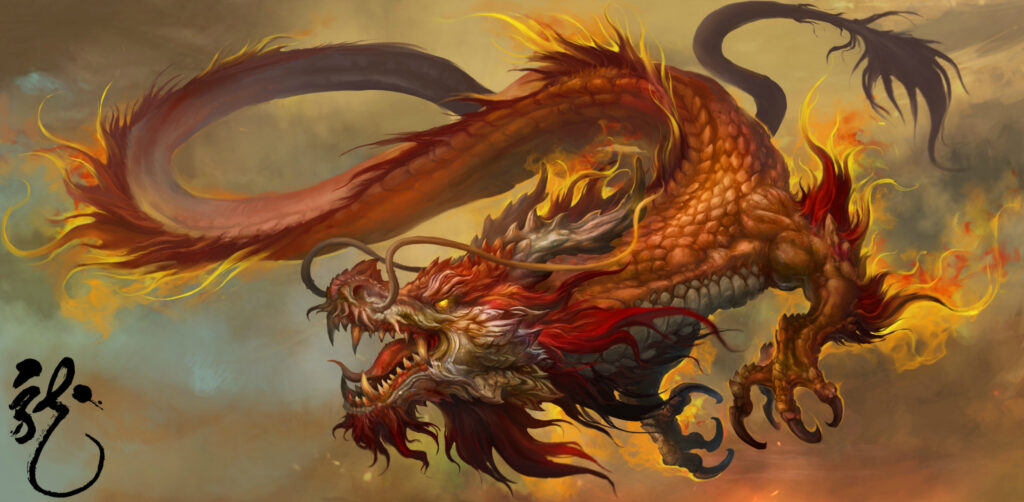
Eastern or Asian Dragons are the most revered of Dragons. They are attributed to have existed only in Asia and have enjoyed a benevolent relationship with both Emperors and common folk. Moreover, they even have a prominent place of honor is Chinese New Year celebrations to call in good luck for the upcoming year.
The Eastern Dragon, often referred to as the Imperial Dragon, is quite large and generally hornless and wingless (with exception of a rare mountain sub-type). Their long-scaled serpent-like body is often depicted in a curling fashion in art and literarture. Even without wings, these Dragons can hover high in the sky as if by some magical power.
The Eastern Dragon possesses a sizeable head framed by a thick mane and their silken fur face sports a pair of long whiskers. And this Dragon’s four disproportionally short legs are thickly tufted around the ankles.
An important distinction between the Eastern Dragon and other Dragon species is they don’t breathe fire. And most don’t possess a poisonous bite. But don’t let these facts give cause to dismiss them. They still have a wide mouth chock full of razor-sharp teeth and treacherous clawed toes for defending themselves. And defend themselves they will when threatened!
The veneration of Eastern Dragons stems from the fact that they don’t feed on humans or livestock. And because they’ve been known to share their considerable wisdom, along with good luck for increased fortunes.
Western/European Dragons
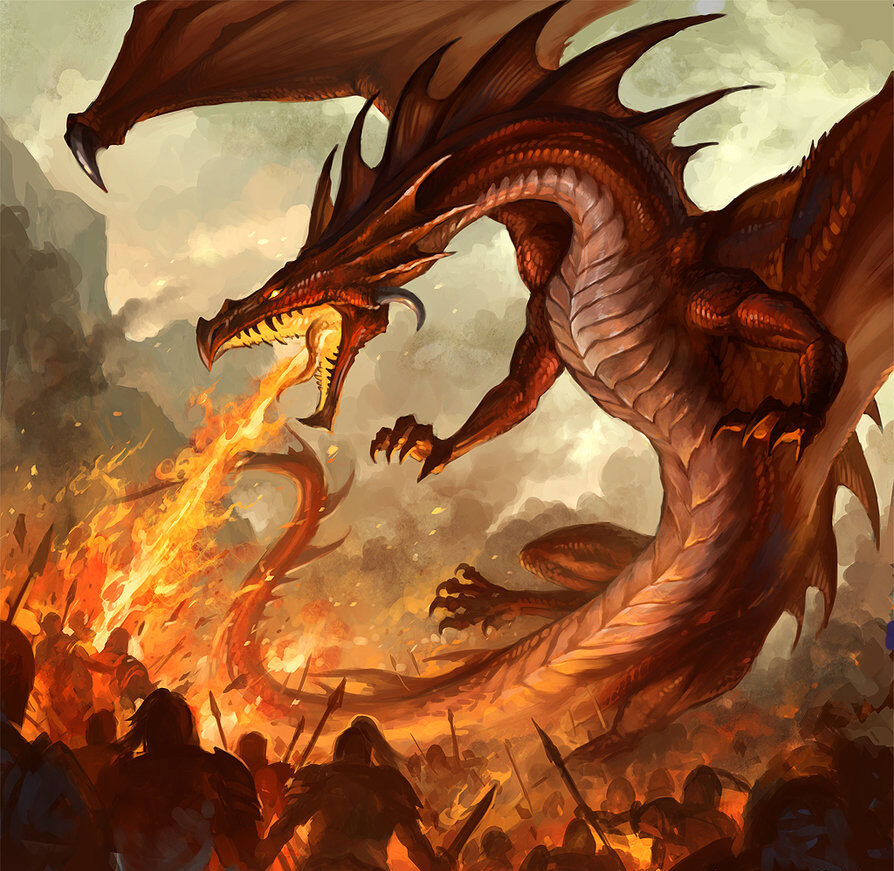
Western or European Dragons are the most feared of Dragons. They are, pardon the pun, an entirely different breed from the Eastern Dragon. Unlike Eastern Dragons, Western Dragons are winged, horned, and fire-breathing. And where Eastern Dragon bodies are serpent-like, Western Dragon bodies are decidedly more lizard-like.
Throughout history Western Dragons have thrown a menacing specter with their humongous bat-like and claw tipped wings, scale armored bodies, horned heads, saber sized teeth, and most notably their fiery breath.
Western Dragons prefer to reside within deep caves with their hoard of shiny found objects. They are almost cat-like in snatching objects they fancy and bringing them home to their lair. And be forewarned that Western Dragons are fiercely protective of their lair and its treasures.
Historically, much of the Western Dragon’s troubles stemmed from their occupation of fertile lands coveted by humans. For when humans encroached upon Dragon territory with their tasty crops and livestock, what was a winter starved Dragon to do?
Thus. began the cycle of embattlement between the local Dragon and its neighbors. The villagers continually tempted and poked the Dragon and then suffered the often-crispy consequences. At least, until a heroic figure arose to slay said Dragon, restoring peace to the village.
Southern/Feathered Dragons
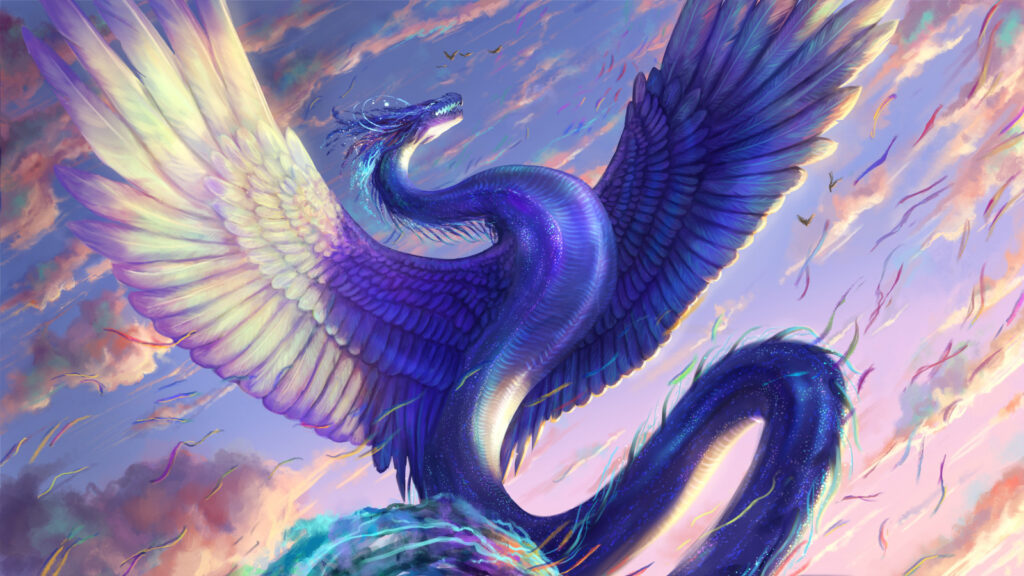
Southern or Feathered Dragons are the rarest of Dragons. Southern Dragons differ from their Eastern and Western Dragon kin, as they are much smaller, lighter, and iridescent feather adorned. Another distinction of the Southern Dragon is they possess a highly toxic and hemorrhage inducing bite. This necessary attribute compensates for their smaller size.
Southern Dragons live and play among the treetops of thickly vegetated rainforests of the Southern hemisphere. However, they do tend to retreat to obscure caves for nesting.
Though lighter than their large Dragon kin, due to their weight, Southern Dragons must use their tails to keep themselves safely adhered to sturdy tree trunks and branches.
4 Main Small Dragon Species
Although there are many Dragon species smaller than the three large Dragon species, there are four main small Dragon species.
Wyverns
Wyverns are smaller winged cousins of Western Dragons with a tail that delivers a venomous sting. Unlike their Western relatives, Wyverns have only two back legs and most do not breathe fire.
Both historically and today Wyverns are the most depicted Dragon type in items of heraldry as mascots. Additionally, they are used in trademarks for royal courts and various sports and business organizations.
A fun Wyvern fact is the infamous three Dragons in the series Game of Thrones were fire-breathing Wyverns, not Western Dragons. This is because, even though referred to as Dragons, they possessed only two legs.
Fire Drakes
Fire Drakes are smaller four-legged cousins of Western Dragons. And Like their Western relatives Fire Drakes are fire-breathing. But unlike Western Dragons they are wingless.
Wyrms
Wyrms are smaller cousins of Western Dragons but are both legless and wingless. Having no legs or wings and a very long length, Wyrms appear serpent-like as they slither over the terrain.
Even more terrifying than their poisonous bite, is their ability to regenerate severed parts of themselves. Subsequently, it’s impossible to kill them.
Sea Serpents
Sea Serpents resemble Wyrms with their wingless, legless, and long serpent-like bodies. And like Wyrms, most Sea Serpents have a poisonous bite and can regenerate severed parts of themselves.
But unlike Wyrms, Sea Serpents live in large lakes, rivers, and seas. And since Sea Serpents spend most of their time submerged in water, they’ve adapted fin-like appendages for propelling themselves through water. The most infamous of Sea Serpents is indisputably, the Loch Ness Monster of Scotland.
Final Words for Dragons – Mythos of These Fantastical Beasts
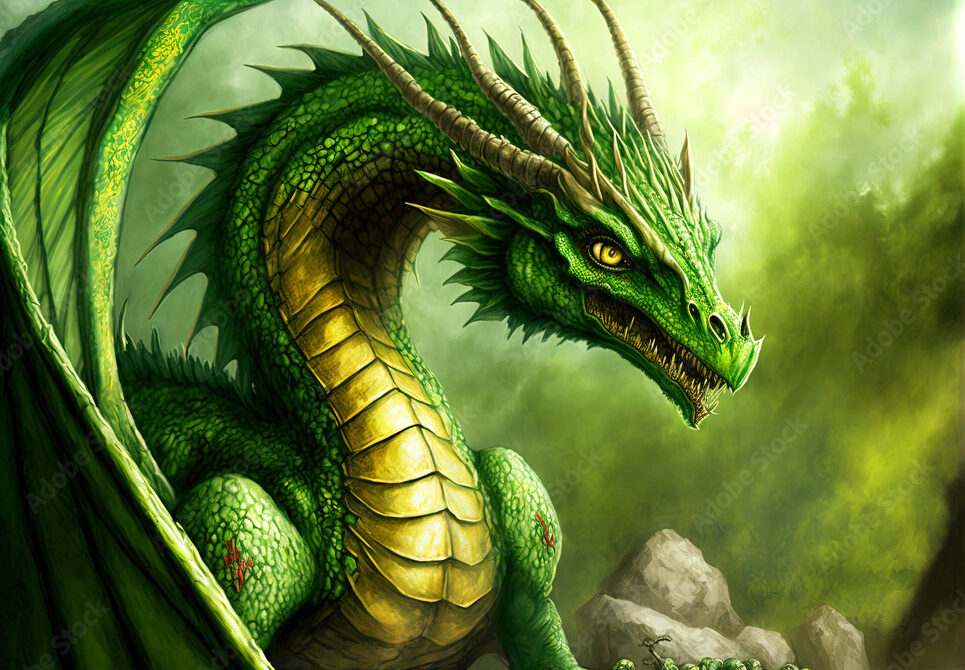
The long-suffering Dragon, an intelligent and majestic creature, is deserving of our reverence and recognition as such. For they’ve been vilified and demonized for far too long. And though believed today to be of only myth and legend, Dragons warrant our concerted effort to preserve their place in the world among other noble creatures.
I do hope you enjoyed this whimsical departure from my usual informational style posts. For I had the most fun delving into the legend and lore of these fantastical Dragon beasts and writing the post for you. Thank you for reading, and may you enjoy a lifelong connection with your own noble Dragon, as I have.
Leave a Reply